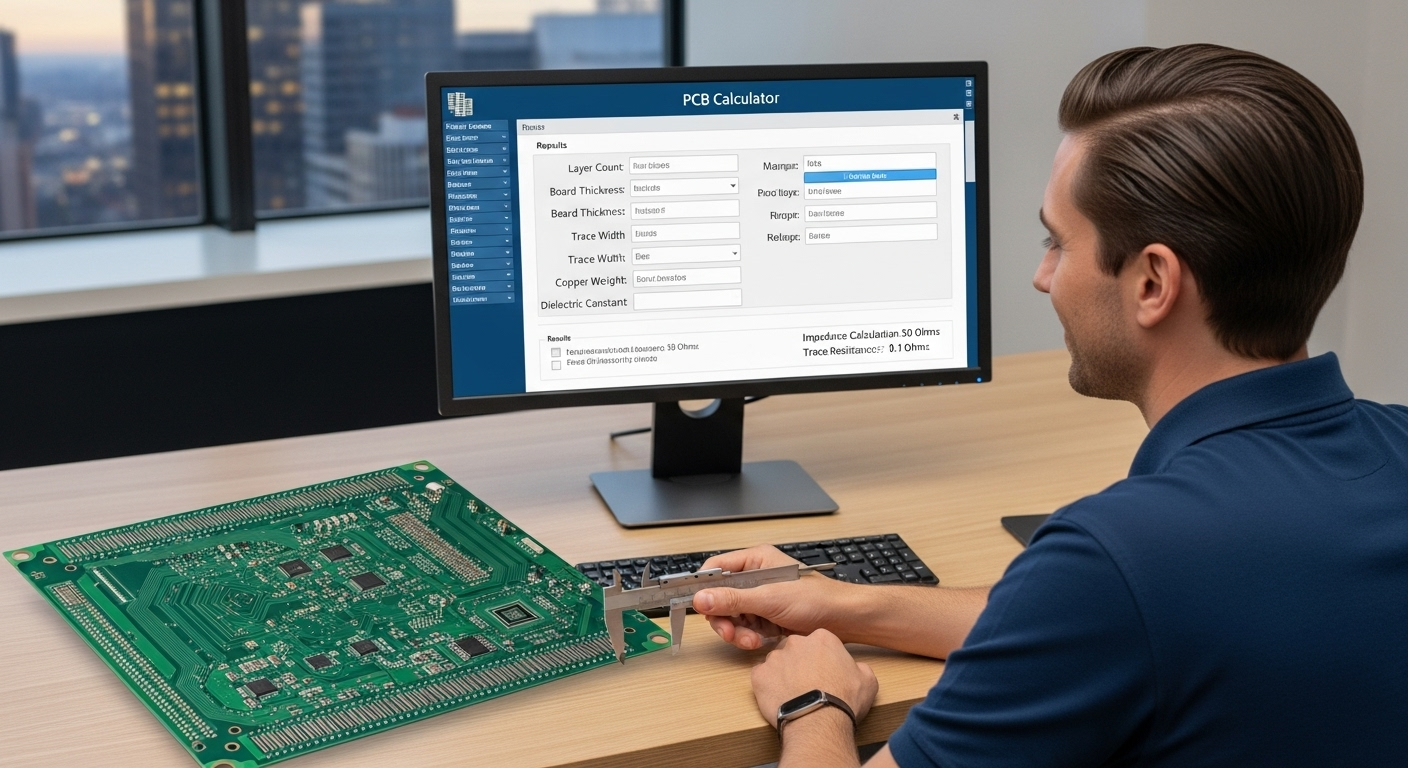If you’re new to PCB design, figuring out the cost, layout, and technical requirements can feel overwhelming. A PCB calculator makes the process easier by giving you quick answers to common design questions. Whether you need to know the cost of manufacturing a small prototype, the correct trace width for current flow, or tolerance percentages, a calculator delivers instant results.
For beginners, hobbyists, students, and entry-level engineers this means less time worrying about complex formulas and more time focusing on learning and creating. At Megabytes Circuit Systems, we provide a beginner-friendly PCB calculator that helps simplify everything from cost estimation to trace width calculation.
A PCB calculator is an online tool designed to help designers estimate the cost and technical specifications of printed circuit boards. Instead of manually calculating values or waiting for manufacturer quotes, you can input basic details and receive results within seconds.
Some of the key parameters a PCB calculator can handle include:
For beginners, this is much faster and more practical than manual calculations or spreadsheets.

Beginners often struggle with complex PCB formulas. A calculator removes this barrier by instantly showing how changes in size, copper weight, or layers affect cost and performance.
Most beginners work with limited budgets. Instant cost estimation prevents overspending and ensures projects stay affordable.
By using trace width and tolerance calculators, you know your board is practical, safe, and manufacturable. This reduces the risk of errors such as overheating traces or oversized layouts.
Using a calculator is straightforward. Here’s how it typically works:
Example:
Imagine you’re designing a 100mm x 80mm two-layer PCB with 1.6mm thickness and 1oz copper. By entering these values, the calculator provides:
This means you can validate your design before even contacting a manufacturer.
The calculator estimates cost based on:
For beginners making prototypes, this ensures they know the budget before committing to production.
Trace width defines how wide a copper track should be to safely carry current. If it’s too narrow, traces may overheat; if too wide, board space is wasted. A PCB calculator uses formulas based on current, copper thickness, and allowable temperature rise to recommend safe widths.
Example: A beginner working on an Arduino project with a 1A current can instantly find the correct trace width instead of guessing.
Even small design errors can affect performance. Tolerance calculators help ensure component spacing, copper coverage, and resistance values remain within safe margins. This feature is especially useful for students working on academic projects.
Megabytes Circuit Systems PCB Calculator – Designed to be beginner-friendly while still powerful enough for professionals.
Try the Megabytes Circuit Systems PCB Calculator today to simplify your next project.
While calculators are helpful, beginners sometimes misuse them. Common mistakes include:
For beginners, calculators aren’t just tools, they are learning aids. By changing inputs and observing results, users can see how design parameters affect cost and performance. This reinforces theory from electronics courses and provides practical feedback that books and lectures often cannot.
At Megabytes Circuit Systems, our PCB calculator is designed with beginners in mind. It combines simplicity with accuracy, making it a reliable tool for anyone starting out in PCB design.
Try the Megabytes Circuit Systems PCB Calculator today to simplify your next project.
For beginners in electronics, a PCB calculator is more than a convenience it’s a foundation for learning and confident design. From cost estimation to trace width and tolerance checks, these tools simplify PCB design and help avoid mistakes that could derail a project.
Whether you’re a hobbyist building your first circuit, a student working on a university project, or an entry-level engineer starting in the field, calculators provide the clarity and confidence you need.
Start your journey with the Megabytes Circuit Systems PCB Calculator and make your design process faster, simpler, and smarter.
C/10, Yogeshwar Estate, B/H Madhuram Estate, Nr. Vishala Estate, Sardar Patel Ring Rd, Odhav, Ahmedabad, Gujarat, Ahmedabad - 382430, Gujarat (India)
Copyright © 2025. Megabytes Circuit Systems All rights reserved.
Powered by FrogMEE Tech
